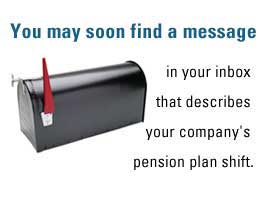|
Pension plans shift
|
 |
January 28, 2000: 2:55 a.m. ET
How to make the most of your company's cash-balance pension plan
By Staff Writer Jennifer Karchmer
|
NEW YORK (CNNfn) - You may dream about relaxing on a sandy beach in your older years more often than you think about how your company's pension plan works - especially if retirement is decades away.
But as more and more companies are revamping their traditional pension plans, young and older workers alike should be aware how the changes could affect them. In some cases, it may mean the difference of thousands of dollars or a few extra years of work.
IBM (IBM), MasterCard International, and Reader's Digest (RDT) are a few of the companies that have recently switched to what's known as a cash-balance plan.

Unlike the traditional plan that accelerates contributions at the end of an employee's career, a cash-balance plan puts aside the same amount of savings every year. Employees accumulate benefits at a steady pace throughout their careers, taking their benefits with them as they hop from job to job. People in their 50s and older with years of service would lose out by missing the end-of-career surge.
And under the cash-balance plan, employees can see their balances at any time, similar to a 401(k) retirement plan.
"It's the more modern, more user-friendly plan," said Steven Kaye, a certified financial planner with the American Economic Planning Group.
Protect your retirement cash
Whether you're just starting your first job in your twenties or you're at the twilight of your career preparing for retirement, a cash-balance plan will affect your later years. Here are four factors you need to keep in mind:
1. Years of service. Older workers at the same job for decades need to find out if their companies offer a transition period where they can choose between the old and new plan.
For example, if you're 50 years old with 20 years of service at one company, you may be able to continue under the old plan. If you're at the cutoff age of 49, you may have to work an extra four to five years to make up the benefits lost under the cash-balance plan.
2. Vesting. Younger employees should ask how many years it takes to become fully vested, meaning your benefits are 100% yours to take to another job.
There are three typical vesting plans: the 100% vested upon hire; the six-year plan that increases to 100%; and the three-year 'cliff' plan that vests an employee 100% only after the third year of service.
You may want to rethink changing jobs or going to graduate school if you're close to becoming vested.
3. Enhancements. Companies can offer unique features to the cash-balance plan that give employees some control.
MasterCard, for example, gives users the choice to allocate a percentage of their plan to track a benchmark, such as the Standard & Poor's 500 Index or the yield on the 30-year Treasury bond.
4. Are you covered? Some companies exclude union workers from the cash-balance plan. Check to see if you are, in fact, covered under the new plan.
Where your money goes
Small companies usually manage their own plans, while larger companies hire an independent trustee to take care of the pension.
Pension plans, traditional or cash balance, typically invest in individual stocks because of the long-term growth in the equity market. But they can invest in a variety of securities, such as bonds, mortgages, and real estate investment trusts (REITs).
Cash-balance plans hit the headlines last year when IBM decided to replace its traditional retirement program. Many long-time workers roared in opposition saying they were going to be deprived of pay they had earned. In some cases, employees would lose from one-third to one-half of their retirement benefits.
"People get mad when it comes to money," said Dee Lee, a certified financial planner. IBM workers banded together via email and Internet chat rooms to air their concerns, and the company eventually modified its plan.
An IBM spokesperson, though, says when the company announced the shift, it offered meetings and counseling sessions, information on its internal
Web site, and personalized mailings to employee's homes. In addition, IBM gave about 65,000 workers a choice depending on their age and years of service.
More companies will make the switch
But the bottom line is that companies save money with a cash-balance plan. Because people are living longer today, employers would have to spend a lot more under traditional plans. Big Blue, for example, expects to save $200 million a year installing the cash-balance plan.
On top of that, because today's workforce is much more mobile, the new plan makes a company more attractive to workers who don't expect to stick around for a lifetime.
Out of the nation's largest 100 companies, at least 16% have cash-balance plans, and that number is growing, according to the consulting firm Watson Wyatt Worldwide in Bethesda, MD.
So you may find a message in your Inbox that describes your company's upcoming pension plan shift.
Companies realize that employees want to be educated about their plan and how it affects them, according to Martha Goodman, director of client services for Personal Education Finance Company, a consulting firm which teaches seminars about retirement plans.
Some employees need to be beat over the head with information, though.
"Most people have to hear a message more than once via a few different mediums to get it," she said. 
|
|
|
|
|
 |

|

